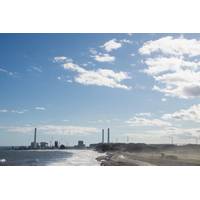
How Japan Will Release Treated Water from the Fukushima Nuclear Plant
the planned decommissioning of the plant.Is the water safe?Japan and scientific organisations say the released water is safe, but environmental activists argue that all the possible impacts have not been studied. Japan says it needs to start releasing the water as storage tanks are full.The International Atomic Energy Agency (IAEA), the U.N. nuclear watchdog, greenlighted the plan in July, saying that it met international standards and that the impact it would have on people and the environment was "negligible".Greenpeace said on Tuesday that the radiological risks have not been fully assessed
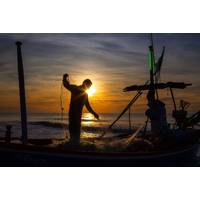
Japan's PM Kishida to Meet Fshermen on Fukushima Water Release Plan
to remove radioactive isotopes, leaving only hard-to-remove tritium. The company will dilute the water to get the tritium below regulatory limits before pumping it into the ocean from a coastal site.Japan's nuclear regulator approved the plan after it got the nod last month from the International Atomic Energy Agency (IAEA), which had conducted a two-year evaluation.Kishida's government will decide as soon as Tuesday when to start releasing the water, likely late this month, Japanese media have reported. The prime minister declined to say when it would begin."The entire government will

Japan to Start Fukushima Water Release as Early as Late August
specific date to discharge the water has been decided, top government spokesperson Hirokazu Matsuno told reporters during a briefing.Japan's nuclear regulator last month granted approval for plant operator Tokyo Electric Power (9501.T) to start releasing the water, which Japan and the International Atomic Energy Agency say is safe but nearby countries fear it may contaminate food.Bottom-trawling fishing is scheduled to start off Fukushima, northeast of Tokyo, in September, and the government aims to start the water discharge before the fishing season gets under way, the newspaper said.(Reuters - Reporting

How Will the Fukushima Water Release Impact the Pacific Ocean?
change human DNA, China and South Korea expressed disquiet, while Pacific Island nations were concerned about further nuclear contamination of the Blue Pacific. One academic publication claimed the total global social welfare cost could exceed US$200 billion.But the Japanese government, the International Atomic Energy Agency (IAEA) and independent scientists have declared the planned release to be reasonable and safe.Based on our collective professional experience in nuclear science and nuclear power, we have reached the same conclusion. Our assessment is based on the type of radioactivity to be released

Fukushima Water Release Plan Gets Initial OK from Japan Regulator
government approved the release of over 1 million tonnes of irradiated water from the site after treatment into the ocean, starting around spring 2023.The announcement provoked concerns from local fishermen and objections from neighboring China and South Korea.The U.N. watchdog, the International Atomic Energy Agency, is tasked with conducting safety reviews of the planned release, and the NRA's initial approval came when IAEA chief Rafael Grossi was visiting Japan.Grossi told Japanese industry minister Koichi Hagiuda that the IAEA's reviews would give the world confidence that the water
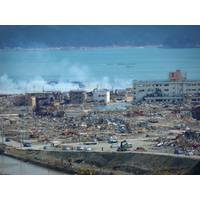
IAEA to Send Experts to Review Fukushima Water Release Plan
A plan to release radioactive water from the Fukushima nuclear plant into the Pacific Ocean will be examined in December by international experts sent by the International Atomic Energy Agency (IAEA), Japan's industry ministry said on Thursday.In a move that angered local fishermen as well as China and South Korea, Japan said in April that it would release into the sea more than 1 million tonnes of contaminated water from the Fukushima plant, which was wrecked by an earthquake and tsunami a decade ago.To gain trust and ensure transparency from the fishermen and neighboring countries, Japan has
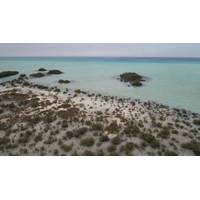
Soil Research Unearths Collecting Point for Plastics
Advances, a collaborative team of researchers has located a sink for this missing plastic—coastal sediments and mangroves forests in particular.The collaborative research, conducted by scientists from KAUST, UC Berkeley, Edith Cowan University, the University of Barcelona, the UN International Atomic Energy Agency, Aarhus University, KFUPM, and IAU details how core samples collected from the Red Sea and Arabian Gulf demonstrate a pattern of sedimentation of plastics. The sediment samples align closely with the history of global production of plastics, a trend that has increased exponentially
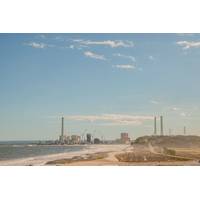
Japan to Release Fukushima's Contaminated Water Into the Sea
particles from the water except tritium, an isotope of hydrogen that is hard to separate and is considered to be relatively harmless.It is common practice for nuclear plants around the world to release water that contain traces of tritium into the ocean.In April, a team sent by the International Atomic Energy Agency to review contaminated water issues at the Fukushima site said the options for water disposal outlined by an advisory committee in Japan - vapor release and discharges to the sea – were both technically feasible. The IAEA said both options were used by operating nuclear plants

Governments Spur Crackdown on Sea Pollution
was prohibited under amendments to the London Convention adopted in 1993, but both the London Convention and Protocol allow for the dumping of certain permitted materials so long as they do not contain levels of radioactivity greater than de minimis (exempt) concentrations as defined by the International Atomic Energy Agency (IAEA). The scientific review is required to be undertaken within 25 years of 20 February 1994 (date of entry into force of the 1993 LC amendments), and at each 25 year interval thereafter. Strategic Plan adopted The meeting adopted a new Strategic Plan for the London



 February 2024
February 2024





